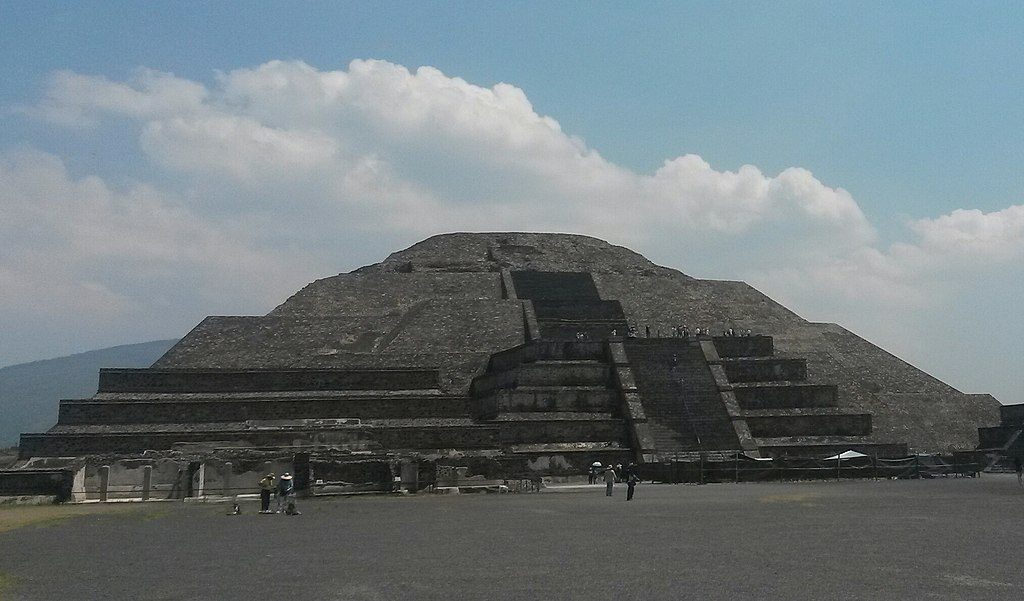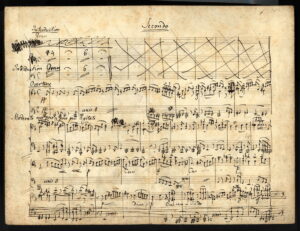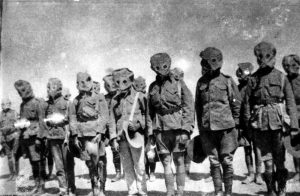At the heart of the mighty Aztec empire laid the capital Tenochtitlan, the Venice of the new world. No other civilization at the time could hope to compare to the city’s impressive pyramids, glamorous temples, and advanced aqueducts. At one point in history, Tenochtitlan was so populous that it contained around 200,000 inhabitants. But Tenochtitlan wasn’t always such a powerful urban site. When the Aztecs were immigrants looking for a new home, they were captivated by a mysterious ancient city. To this day, no one really knows who built it or what happened to its inhabitants. But to the Aztecs, they believed that out of this city emerged the whole of human society and order. This once glorious city was known as Teotihuacán.

There is only a minuscule amount of knowledge about Teotihuacán because a sufficient written record of the city does not exist. In fact, no one knows what the people of Teotihuacán called themselves or what the actual name of the city was. Indeed, it wasn’t until much later that the Aztecs named it Teotihuacán, which means “city of the gods.”1 To an extent, the Aztecs were not exaggerating, because Teotihuacán was once an electrifying center for religion, trade, and culture. At one point, the city contained over 2,000 apartment buildings, 600 pyramids, around 500 workshops, and countless temples, plazas, and palaces.2 But how, exactly, did Teotihuacán become such a powerful metropolis? Once again, let us look at what the Aztecs themselves have to say about it.
According to an Aztec legend, the world was created and destroyed four times before the creation of our current world. Each time the world was destroyed, the sun quickly perished alongside it, and a new sun, presided by a god, was required to create another world.3 The first world was under the dominion of Tezcatlipoca–the god of the night. During his era as the sun, there were no humans, but rather a race of vegetarian giants that roamed the Earth. Tezcatlipoca’s reign lasted for 676 years, but it was cut short when Quetzalcoatl, the god of the wind, grew displeased as he saw the other deity ruling above the land. So he used his staff to knock down Tezcatlipoca into the seas at the farthest corners of the earth. Angered by this, Tezcatlipoca gathered his strength and emerged from the water as a powerful jaguar, running through the Mesoamerican plains and mountains. Soon, many jaguars appeared alongside him, and they eventually hunted and killed every giant on Earth–thus bringing an end to the first world.4
Quetzalcoatl then presided over the second world and, under his rule, human-like beings began to appear. His reign was only 364 years long, however, for Tezcatlipoca wanted revenge on his cosmic rival. Using his dark powers to overwhelm the wind god, he launched a massive hurricane that swept away the sun and the people. Darkness then covered the world and the survivors hid in the trees, eventually turning into monkeys.5

Tlaloc, the rain god, found opportunity in the darkness, and quickly took charge over the new third world. Much to Tlaloc’s dismay, Quetzalcoatl was displeased with his rule, and he sent a rain of fire that again destroyed the sun and earth. The survivors who hid from the fire became the ancestors of the dogs, turkeys, and butterflies of today. The goddess of the lakes and oceans, known as Chalchiúhtlicue, then presided over the fourth sun and world. Although her reign lasted much longer than the previous two, tragedy was no stranger to the gods. Although no one knows exactly how the fourth world ended, Aztec accounts seem to tell the story of a great flood covering the Earth, turning the inhabitants of that world into fish, whales, and other creatures of the deep ocean.6
After some time, all the gods gathered at Teotihuacán. The earth was filled with darkness and a new sun was needed. The gods also decided that a moon should provide light when the sun did not. The rich god Tecuciztécatl proudly stepped forth to be the new sun. But a small, humbler god, Nanahuatzin also volunteered. After agreeing to share the Earth, the two made preparations to renew the world.7 For four days, Tecuciztécatl and Nanahuatzin prayed and fasted.8 When they finished, the other gods lit a great fire on the hard earth of Teotihuacán. In his lavish robes, Tecuciztécatl threw valuable quetzal feathers, stone flints, and incense into the fire as sacrifices. Nanahuatzin, having no riches to sacrifice, humbly offered weeds drenched in his own blood. The two slowly then approached the menacing flames of the fire. Tecuciztécatl intended to go first but he was ultimately driven back by the heat of the inferno. He approached it again for the second time… the third… the fourth. No matter what he did, the rich god was being held back by his fear. Then Nanahuatzin stepped forward. With his eyes closed and mind stilled, Nanahuatzin leapt into the great fire. Having been awestruck by his rival, Tecuciztécatl quickly rushed into the flames. Nanahuatzin then became the new sun, while Tecuciztécatl became the moon.9

The gods then waited for the new world to develop. However, after a while, the gods noticed that nothing was happening. Why wasn’t the new sun in motion? Why hadn’t the world been fully restored? After a discussion with Nanahuatzin, the rest of the gods then threw themselves into the fire, one by one, to restart the world. After all the gods sacrificed themselves, the age of the fifth sun began, and the world was now in motion. It was then, that out of Teotihuacán human society was born. The city flourished under the leaders and priests of Teotihuacán and it is said that after their deaths the pyramids of the sun and moon were built by giants.10
Though we may never know how this city actually came to be, it is no mystery that Teotihuacán was once a revered city in Mesoamerica. To this day, many visit the ruins of Teotihuacán and observe its sites, such as the “Avenue of the Dead,” a two-mile road that connects the Pyramid of the Moon to a large market. Other wonders include the towering Pyramid of the Sun, which was once a revered ritual site because it was built over a cave that many once believed was the place where humans emerged into the world.11 Some of the palaces and temples still stand today, such as the famed temple of Quetzalcoatl. While Teotihuacán may have a murky history, its name continues to stand against the sands of time, eternally offering its mysterious beauty to curious observers everywhere who yearn to learn more of humanity’s past.
- Early Civilizations in the Americas Reference Library, 2005, s.v. “Teotihuacán,” by Sonia G. Benson. ↵
- Charles Phillips, Aztec and Maya: The Complete Illustrated History: The Greatest Civilizations of Ancient Central America with 1000 Photographs, Paintings and Maps (New York: Metro Books, 2008), 55. ↵
- Early Civilizations in the Americas Reference Library, 2005, s.v. “Teotihuacán,” by Sonia G. Benson. ↵
- Charles Phillips, Aztec and Maya: The Complete Illustrated History: The Greatest Civilizations of Ancient Central America with 1000 Photographs, Paintings and Maps (New York: Metro Books, 2008), 160. ↵
- Charles Phillips, Aztec and Maya: The Complete Illustrated History: The Greatest Civilizations of Ancient Central America with 1000 Photographs, Paintings and Maps (New York: Metro Books, 2008), 160. ↵
- Charles Phillips, Aztec and Maya: The Complete Illustrated History: The Greatest Civilizations of Ancient Central America with 1000 Photographs, Paintings and Maps (New York: Metro Books, 2008), 161. ↵
- Charles Phillips, Aztec and Maya: The Complete Illustrated History: The Greatest Civilizations of Ancient Central America with 1000 Photographs, Paintings and Maps (New York: Metro Books, 2008), 161. ↵
- Early Civilizations in the Americas Reference Library, 2005, s.v. “Teotihuacán,” by Sonia G. Benson. ↵
- Charles Phillips, Aztec and Maya: The Complete Illustrated History: The Greatest Civilizations of Ancient Central America with 1000 Photographs, Paintings and Maps (New York: Metro Books, 2008), 162. ↵
- Early Civilizations in the Americas Reference Library, 2005, s.v. “Teotihuacán,” by Sonia G. Benson. ↵
- World History Encyclopedia, 2011, s.v. “The Teotihuacan Empire, 300–650 CE,” by Alfred J. Andrea. ↵




102 comments
Melissa Garza
I really enjoyed this article because it has such a mysterious past, and also I love reading about different creation stories. Reading about the different gods and the way the Earth is what it is now because the Earth was created and destroyed four times, really makes me wonder how other creation stories might be similar or different. Overall, Teotihuacan’s origin and the success of the Aztecs is an amazing wonder that is incredibly fascinating to read about.
Nathaniel Bielawski
I wonder how Teotihuacan built such massive buildings like the Moon Temple! The Aztec Gods remind me of the Greek gods, in that each had a domain such as water or fire. I hope that someday, someone will uncover the origins of Teotihuacan and their culture.
Estefanie Santiago Roman
This was such an interesting article to read. My family lives near the pyramids so I tend to go to them often and I remember my grandpa telling me this story, and it is truly incredible how big the site is. Even currently there are things being excavated, and they continue to discover more pieces of the “puzzle”. It is believed that the city had major trades with Asian countries as well, which is mind-blowing. Over all this was a great origin story!
Sara Guerrero
Seeing the pictures of the pyramid of Teotihuacan it looks massive and the thing in this article the surprised me the most was that the city was a growing metropolis and I would call it a very rich empire. The thing I wonder the most is what happened to the individuals who lived there and how and where did these stories come from? I’m curious as to who told them these stories too and if it was really something real or fake.
Meadow Arriaga
The mystery of how human civilization has always been a mystery since records were not always being made of events happening at the time. I find it interesting how legends come to be. The story had to be retold multiple before ever being available to find research on it. Teotihuacan has only left behind the pyramids as clues to where humans started.
Zachary Kobs
I always love to read and hear stories about the ancient Gods of a religion and how the people who worshipped them believe they came to be and what they were meant to do. Although, I am very curious as to what happened to the original inhabitants or who built the ancient city. If I could go back in time to keep a record of how history unfolded from the start of mankind I would.
David Castaneda Picon
I really enjoyed this article, the legends of ancient civilizations are always intriguing stories because all the different tales and theories that question the origins of different ancient cultures. I had never heard about this Teotihuacán tale before but I think it’s just amazing how every culture have its different theories and believes about how things were originated, I would really like to learn more about this ancient civilization and hope that one day we can know the truth about how those amazing structures where built.
Seth Roen
The development of early empires in the Americas is a subject that seems to be a footnote in history and an almost specialized topic. The founding of Teotihuacán reminded me of the legend of the founding of Rome, but instead of brothers, the founders were the gods themselves. I found the belief history of the city before the legend fascinating, and it showed a quick glimpse into the lives of the Aztecs so many centuries ago.
Francisco Cruzado
I certainly enjoyed a lot pronouncing the names of the ancient gods in my head! It is certainly a magnific tale that of the mythology of Mesoamerica. Teotihuacán and many other places in Mexico, I supposse, keep such great stories within their collective memory, and are there in the books, for us, to find more about them. I am really intrigued by the correlation between fire and purification, or a sort of respect/honor towards a goal or figure. It is interesting to think on those matters in the modern era
Ariana Brown
This is such a cool tale! It’d be really cool to learn more about the stories that were passed down from the Aztecs. I wonder why the tales of the Aztecs have not been passed down more widely, such as that of Greek Mythology.